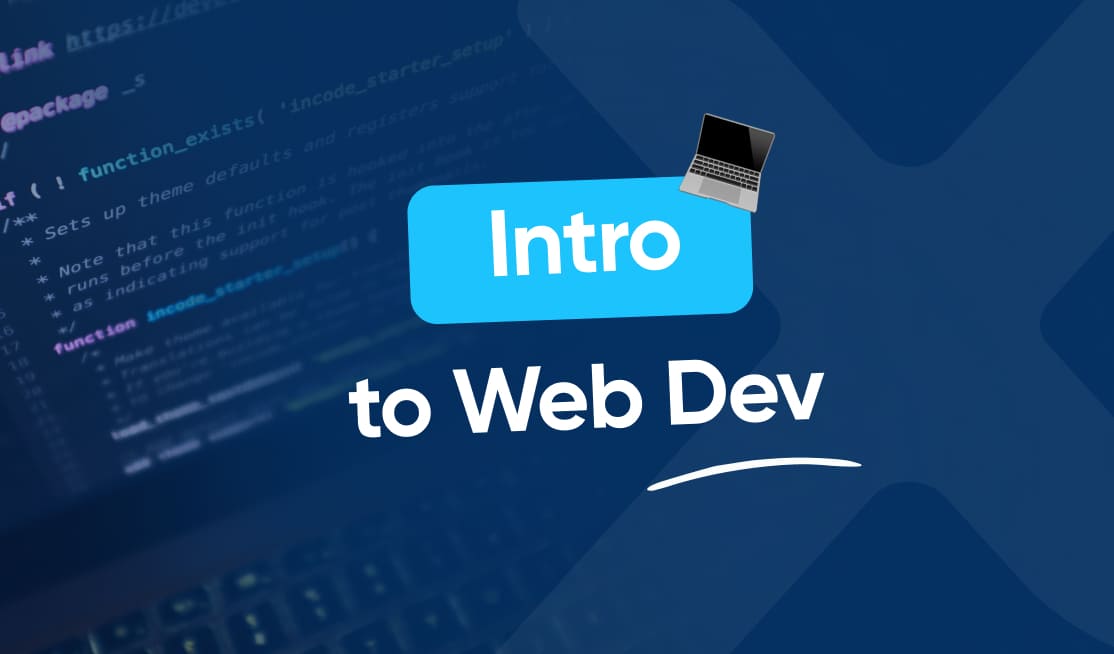
Web development is an essential field in today’s digital world. It encompasses a wide range of skills and practices that revolve around the creation, implementation, and maintenance of websites and web applications. As the demand for online presence continues to grow, so does the significance of web development.
Understanding the Basics of Web Development
When it comes to understanding web development, it is crucial to delve into the fundamentals. Web development can be defined as the process of building and maintaining websites using various tools, technologies, and programming languages. It encompasses both the technical aspects, such as coding and programming, as well as the creative aspects, such as designing and usability. In a nutshell, web development is the art and science of crafting impressive online experiences.
Web development involves a wide range of skills and knowledge. It requires a deep understanding of HTML (Hypertext Markup Language), CSS (Cascading Style Sheets), and JavaScript, which are the building blocks of any website. Additionally, web developers need to be familiar with frameworks and libraries such as React, Angular, and jQuery, which provide powerful tools for creating dynamic and interactive web pages.
One of the key aspects of web development is ensuring that websites are responsive and mobile-friendly. With the increasing use of smartphones and tablets, it is essential for websites to adapt to different screen sizes and resolutions. This involves using techniques such as media queries and flexible layouts to create a seamless user experience across devices.
Defining Web Development
Web development involves the creation of websites and web applications that are functional, visually appealing, and user-friendly. It encompasses various disciplines, including front-end development, back-end development, and full-stack development. Each discipline plays a vital role in bringing a website to life.
Front-end development focuses on the client-side of web development. It deals with the visual and interactive elements of a website that users see and interact with. This includes designing the user interface, implementing animations and transitions, and optimizing the performance of the website. Front-end developers use HTML, CSS, and JavaScript to create engaging and user-friendly web experiences.
Back-end development, on the other hand, focuses on the server-side of web development. It involves building the infrastructure and logic that powers a website. This includes setting up databases, writing server-side scripts, and handling user authentication and data storage. Back-end developers use programming languages such as PHP, Python, and Ruby to create robust and scalable web applications.
Full-stack development combines both front-end and back-end development. Full-stack developers have a broad range of skills and can handle all aspects of web development. They are proficient in both client-side and server-side technologies, allowing them to build end-to-end web solutions.
The Importance of Web Development
In today’s digital era, having a strong online presence is crucial for businesses and individuals alike. A well-developed website serves as a gateway for connecting with audiences, building brand identity, and driving business growth. It provides a platform to showcase products, services, and ideas to a global audience. Furthermore, web development allows for seamless interaction and engagement with users, enhancing the overall user experience.
Web development also plays a crucial role in search engine optimization (SEO). By optimizing a website’s structure, content, and performance, web developers can improve its visibility in search engine results. This leads to increased organic traffic and better online visibility, ultimately driving more conversions and revenue.
Moreover, web development is an ever-evolving field. New technologies and frameworks emerge constantly, providing developers with exciting opportunities to innovate and create cutting-edge web experiences. Staying up-to-date with the latest trends and advancements in web development is essential for staying competitive in the industry.
In conclusion, web development is a multifaceted discipline that combines technical expertise with creative flair. It involves the creation of websites and web applications that are visually appealing, user-friendly, and functional. With the increasing importance of the online world, web development has become a critical skill for businesses and individuals looking to establish a strong digital presence.
The Different Types of Web Development
Web development can be categorized into different types based on the specialization and focus areas. Let’s explore three major types of web development:
Front-End Development
Front-end development, also known as client-side development, focuses on the visual and interactive elements of a website that users see and interact with directly. It involves using HTML, CSS, and JavaScript to create engaging user interfaces, animations, responsive designs, and more. Front-end developers are responsible for ensuring that a website looks and functions seamlessly on different devices and browsers.
Front-end development is an exciting field that requires creativity and technical skills. It involves understanding user experience (UX) principles and implementing them to create intuitive and user-friendly interfaces. Front-end developers use HTML to structure the content of a web page, CSS to style and layout the elements, and JavaScript to add interactivity and dynamic functionality.
One of the key challenges in front-end development is ensuring cross-browser compatibility. Different browsers may interpret HTML, CSS, and JavaScript differently, which can lead to inconsistencies in how a website looks and functions. Front-end developers need to test their code on multiple browsers and devices to ensure a consistent experience for all users.
Back-End Development
Back-end development, or server-side development, is responsible for the behind-the-scenes functionality of a website. This includes managing databases, server configurations, and coding the logic that powers the website. Back-end developers work with server languages such as PHP, Python, or Ruby to handle data storage, user authentication, and dynamic content generation.
Back-end development is crucial for websites that require complex functionality, such as e-commerce platforms, social media networks, and content management systems. Back-end developers use frameworks and libraries to streamline their development process and ensure security and scalability.
In addition to server languages, back-end developers also work with databases to store and retrieve data. They use query languages like SQL to interact with databases and ensure efficient data management. Back-end developers need to have a strong understanding of data structures and algorithms to optimize the performance of their applications.
Full Stack Development
Full stack development refers to the ability to work on both the front-end and back-end aspects of web development. A full stack developer possesses the skills and knowledge needed to handle all stages of web development, from ideation to deployment. Full stack developers are proficient in multiple programming languages, frameworks, and databases, making them versatile and valuable assets.
Being a full stack developer requires a broad skillset and the ability to switch between different technologies and programming languages. Full stack developers can take a project from concept to completion, handling both the user-facing and server-side components. They have a deep understanding of how different technologies interact and can optimize the performance and functionality of a website.
Full stack development is a popular choice for freelancers and small development teams as it allows them to work on projects independently without relying on specialized developers for each aspect of the development process. Full stack developers can also collaborate effectively with front-end and back-end developers, bridging the gap between the two disciplines.
The Tools and Languages Used in Web Development
Web development relies on a plethora of tools, programming languages, and frameworks to bring ideas to life. Let’s explore some of the essential components of web development:
HTML, CSS, and JavaScript
HTML is the building block of any web page, while CSS is responsible for styling and layout. JavaScript, on the other hand, adds interactivity and dynamic functionality to websites. These three languages work together to create the visual and interactive elements of a website.
Frameworks and Libraries
Frameworks and libraries simplify the web development process by providing pre-written code and functionalities. Popular front-end frameworks like React, Angular, and Vue.js allow developers to create complex user interfaces efficiently. Back-end frameworks such as Node.js, Django, and Ruby on Rails streamline server-side development.
Databases and Server Languages
For managing and storing data, web developers rely on databases such as MySQL, PostgreSQL, or MongoDB. These databases work together with server languages like PHP, Python, or .NET to handle data retrieval, storage, and manipulation on the server-side.
The Process of Web Development
Web development is an intricate process that involves various stages. Each stage requires careful planning, meticulous execution, and thorough testing. Let’s take a closer look at the different steps involved:
Planning and Designing a Website
Before diving into coding, it is essential to plan and design the website. This involves gathering requirements, creating wireframes or prototypes, and finalizing the website’s structure and layout. A well-thought-out plan ensures that the final website meets the desired objectives and user expectations.
Coding and Testing the Website
Coding is where the magic happens. Developers use their knowledge of programming languages and frameworks to write clean, efficient, and bug-free code. During this stage, rigorous testing is carried out to identify and fix any issues or bugs that may arise. Testing ensures that the website functions as intended and provides a seamless user experience.
Launching and Maintaining the Website
Once the website is coded, tested, and approved, it is time to launch it to the world. This involves setting up the necessary hosting, domain, and server configurations. After launch, regular maintenance and updates are essential to keep the website secure, up-to-date, and optimized for performance. Ongoing maintenance ensures that the website continues to meet user expectations and stays ahead in the ever-evolving digital landscape.
In conclusion, web development is an intricate process that combines creativity and technical expertise to create captivating online experiences. It encompasses various disciplines, types, and tools that shape the digital landscape we interact with every day. To stay ahead in this digital age, embracing web development is crucial for individuals, businesses, and industries alike.


